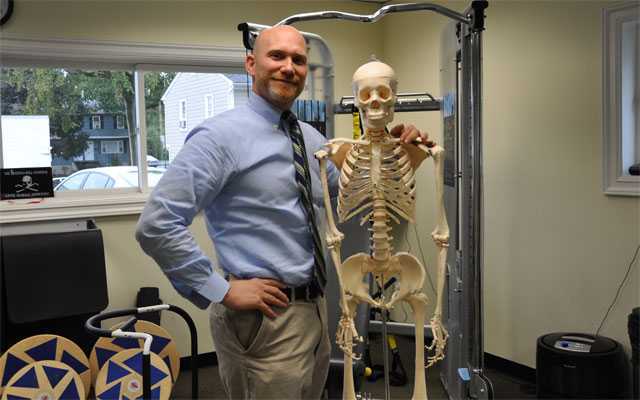Meet the Instructor of the Chronic Pelvic Pain Course!
This November, Herman & Wallace is proud to bring our Differential Diagnostics of Chronic Pelvic Pain and Dysfunction to Orlando, FL! This three-day course is taught by Peter Philip, PT, ScD, COMT.

Pelvic Rehab Report sat down with Peter recently to talk to him about his course.
What can you tell us about this continuing education course that is not mentioned in the “course description” and “objectives” that are posted online?
There are many cause of pelvic pain! For instance, the pudendal nerve is often implicated as the sole source of pelvic pain, and this is simply not true. This course covers multiple reasons and nerves that can cause pelvic pain and dysfunction, and instructs participants on how to determine the exact tissue at fault when approaching patients with pelvic pain and dysfunction.
The course also covers the multiple factors and etiologies leading to the formation of muscle spasms, so that muscle spasms can be treated and, ultimately, eliminated.
At the course, the clinician will learn to determine the origin along the neuroaxis where his/her patient’s pain initiates, and - more importantly - how to specifically address and remedy the patient’s ailments.
The lecture portion of the course is based on applied anatomy and differential tissue tension. Lab sessions cover palpation strategies. After the course, there will be no more ‘guessing’ which and what structure is being palpated; the clinician will know.
The clinician will learn how to palpate, test and treat the anterior sacroiliac joint ligament, and learn its role in not only pelvic pain, but lower back pain as well.
The course also covers how to specifically test each sacral nerve, and to determine its contribution to the patient’s pain and dysfunction.
Using these techniques, I expect to have a positive impact on my patient population within three visits. The goal of my course is to teach other clinicians to do this for their patients too.
What inspired you to create this course?
My first patient with pelvic pain took his own life as a result of his persistent pain, and the secondary losses of career and relationships. This had a huge impact on me, and was coupled with a frustration that I felt because there wasn’t a means of accurately determining the exact tissue at fault in the initiation and perpetuation of a patient’s pain and dysfunction.
What resources and research were used when writing this course?
Over fifteen years of research and clinical experience went in to the development and formation of the content and information presented in this course. I drew from the orthopedic, neurophysiologic, urogynecologic and pathophysiologic practices and research and integrating these practices into a unified, progressive evaluation and treatment strategy.
Can you describe the clinical/treatment approach/techniques covered in this continuing education course?
The general concept is that every pain has a source. It is up to the clinician to determine what that cause is, and to formulate a treatment strategy that reflects and accurately addresses the tissue(s) at fault. In doing so, both the clinician and the patient will notice immediate resolution of pain, spasm and dysfunction.
Why should a therapist take this course? How can these skill sets benefit his/ her practice?
This course provides all clinicians with the opportunity to understand the entirety and complexity of the patient with pelvic pain, and dysfunction. The clinician will understand the role and interaction of the brain, spinal cord, spinal joints, sacroiliac joint, hip joints, ligaments of the spine and sacroiliac joint, and individual nerve roots have in the initiation and perpetuation of their pain and dysfunction.
This course is a must for clinicians who are eager to learn more about chronic pelvic pain and dysfunction. Seats are limited so register today!
By accepting you will be accessing a service provided by a third-party external to https://hermanwallace.com/







































